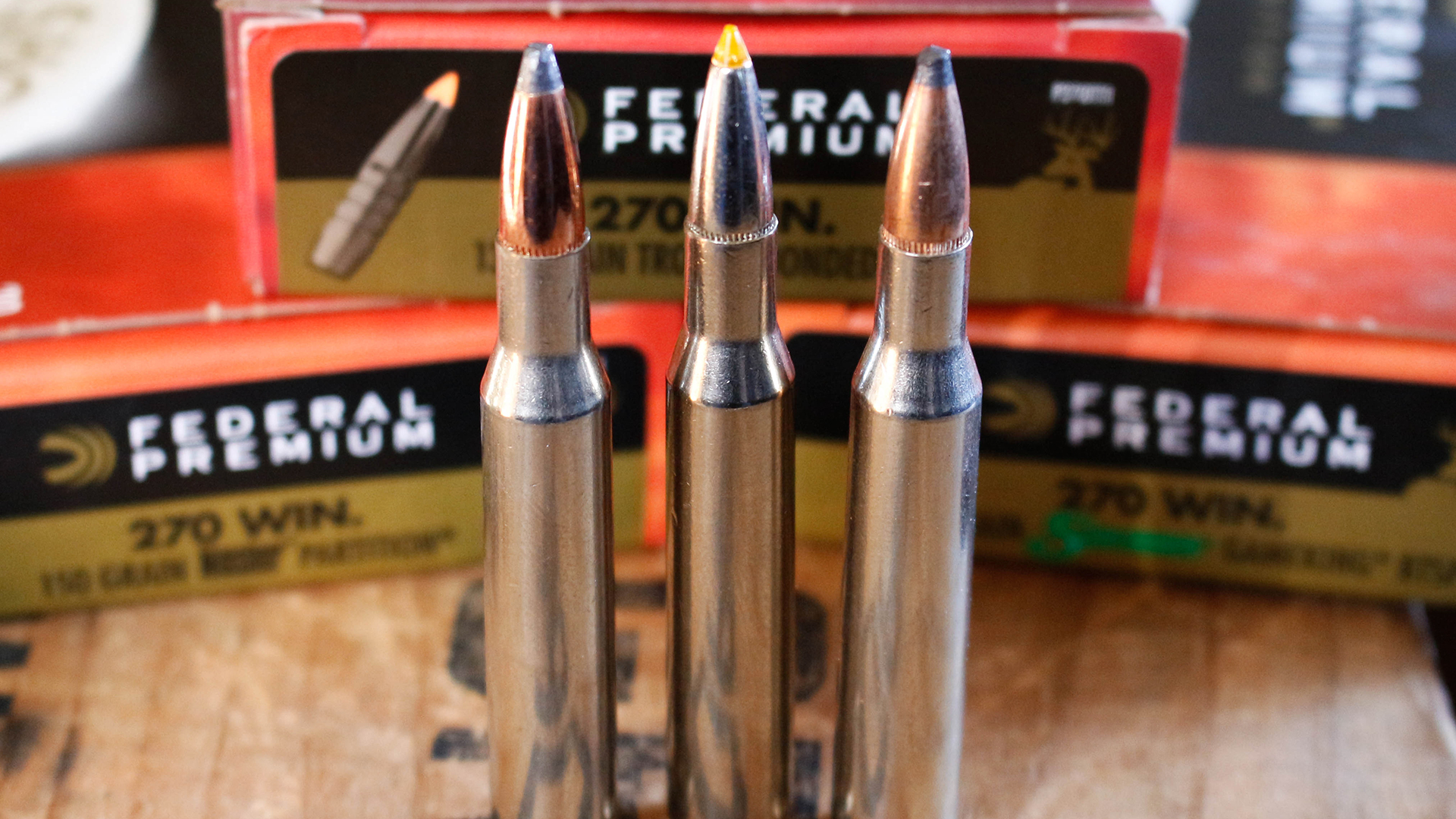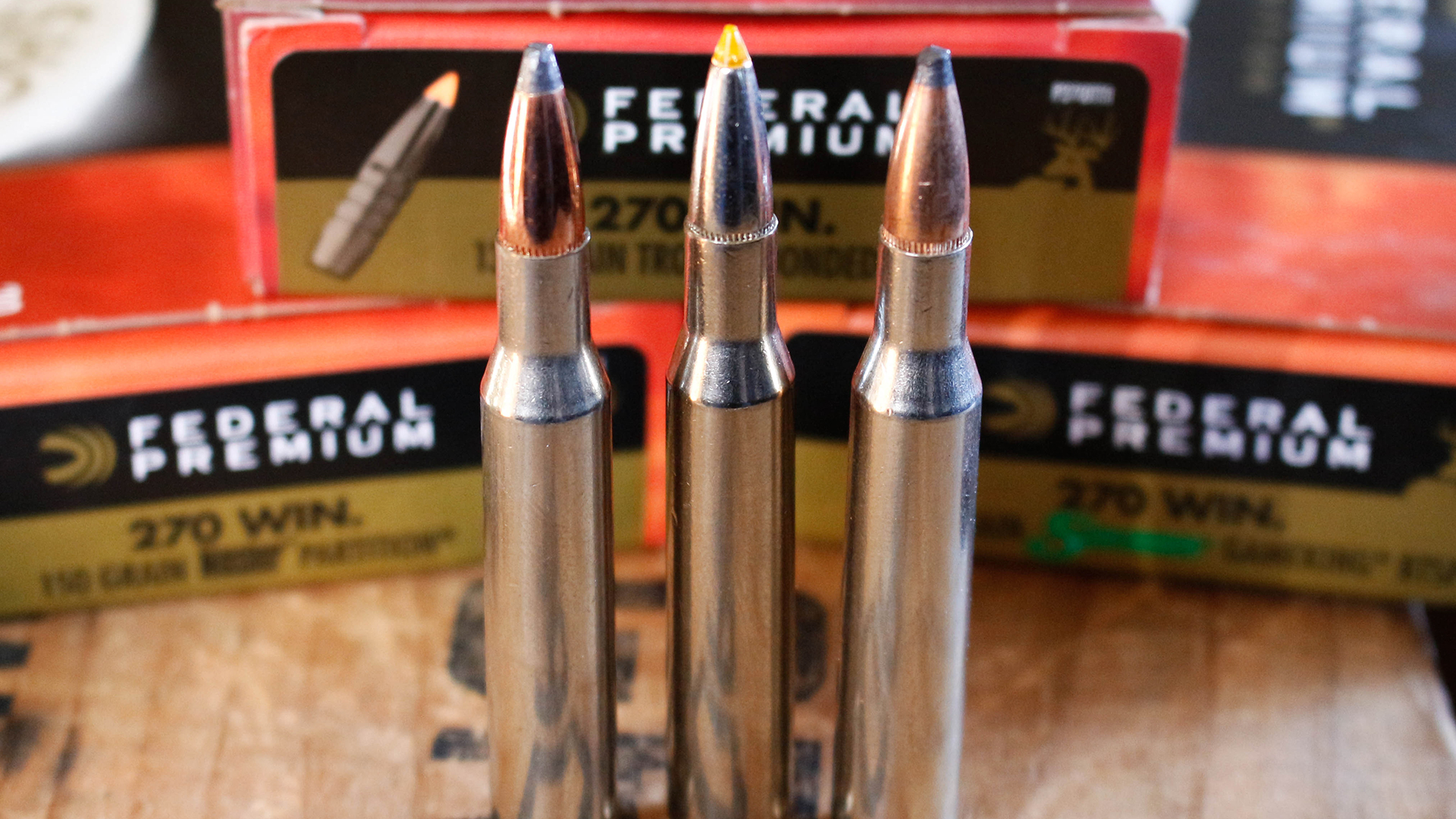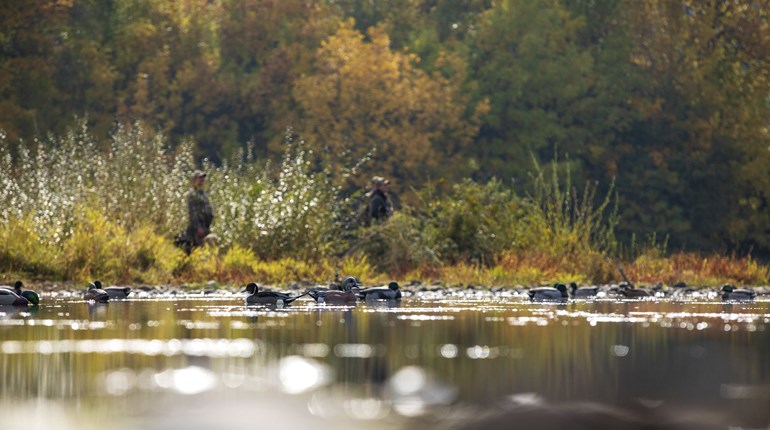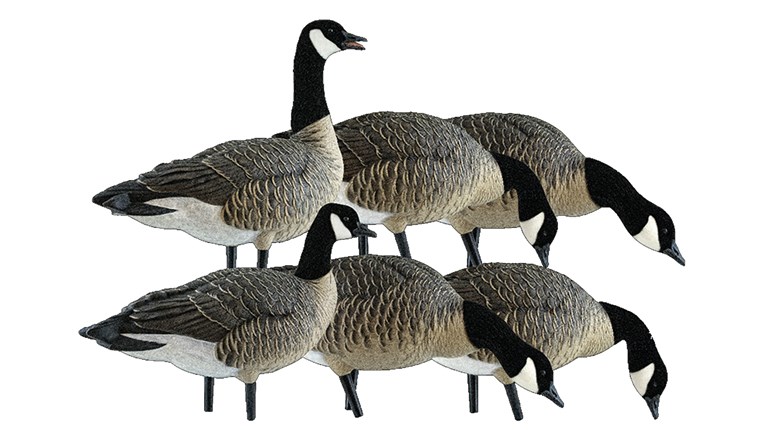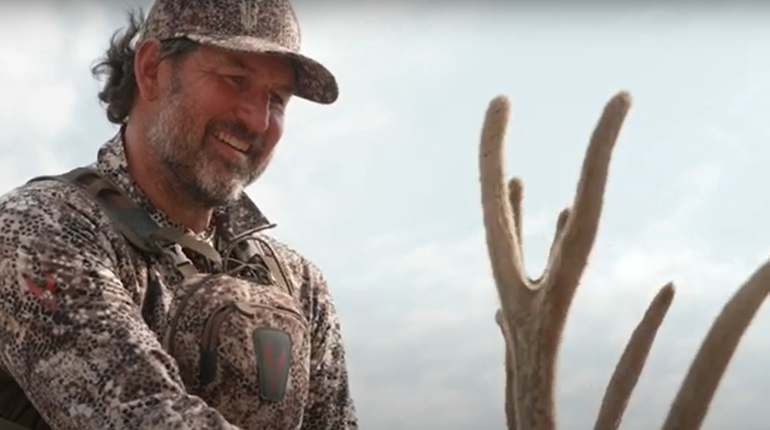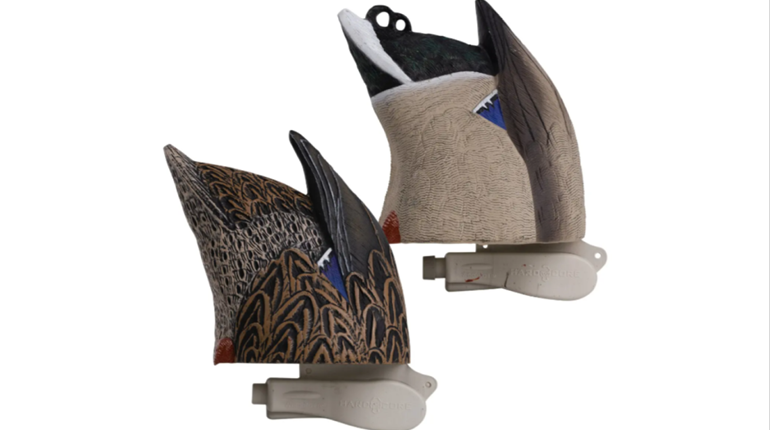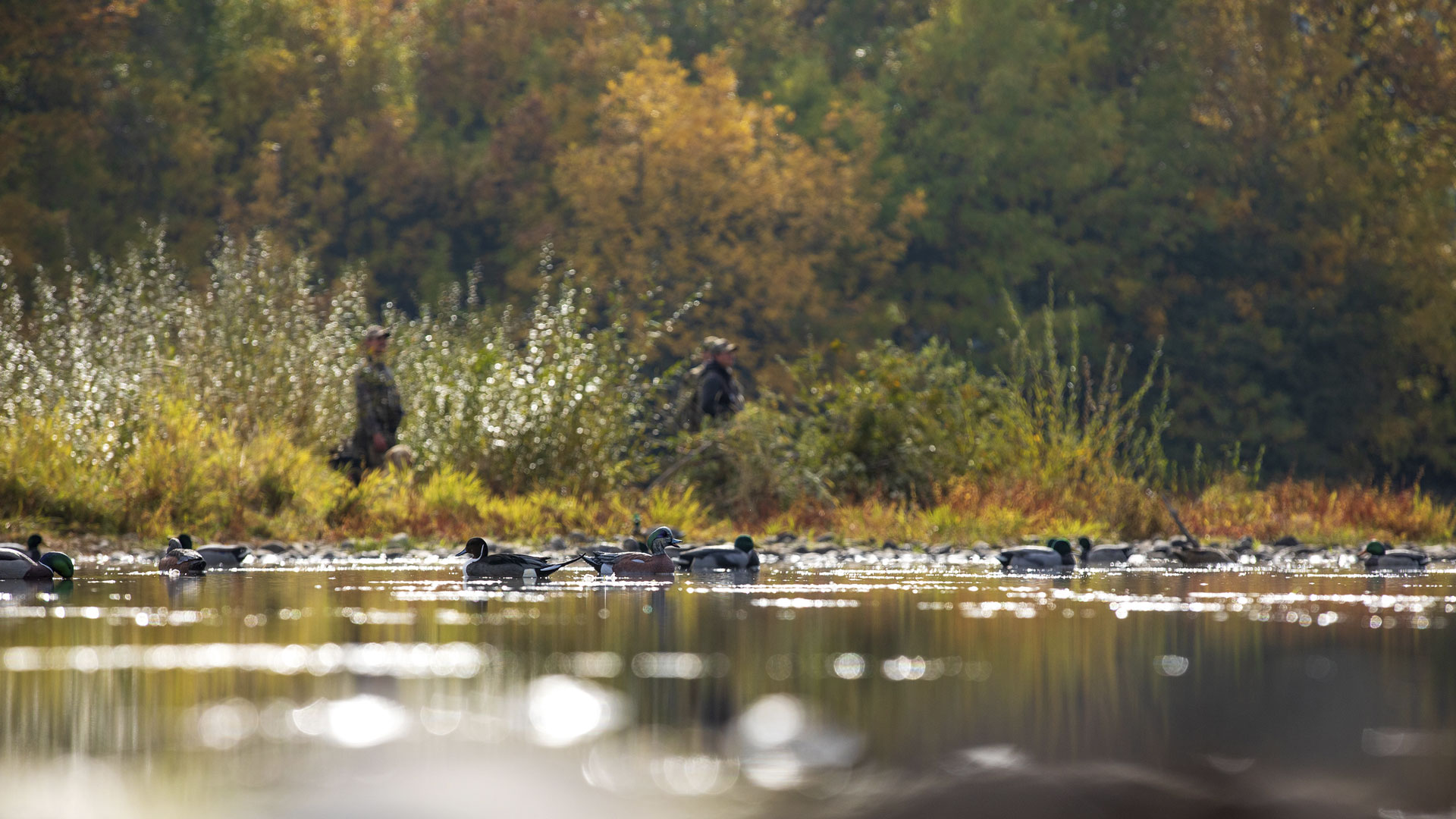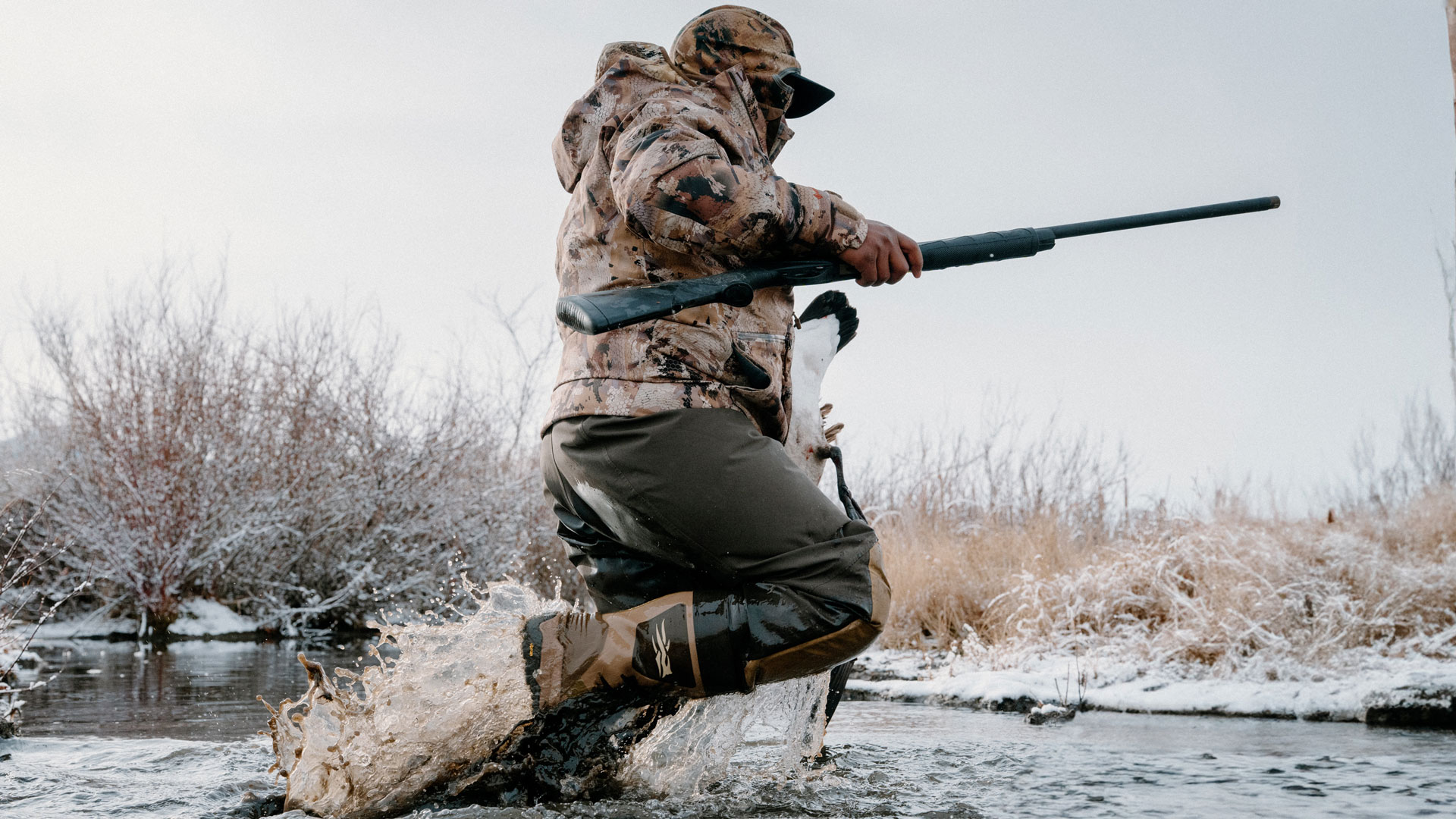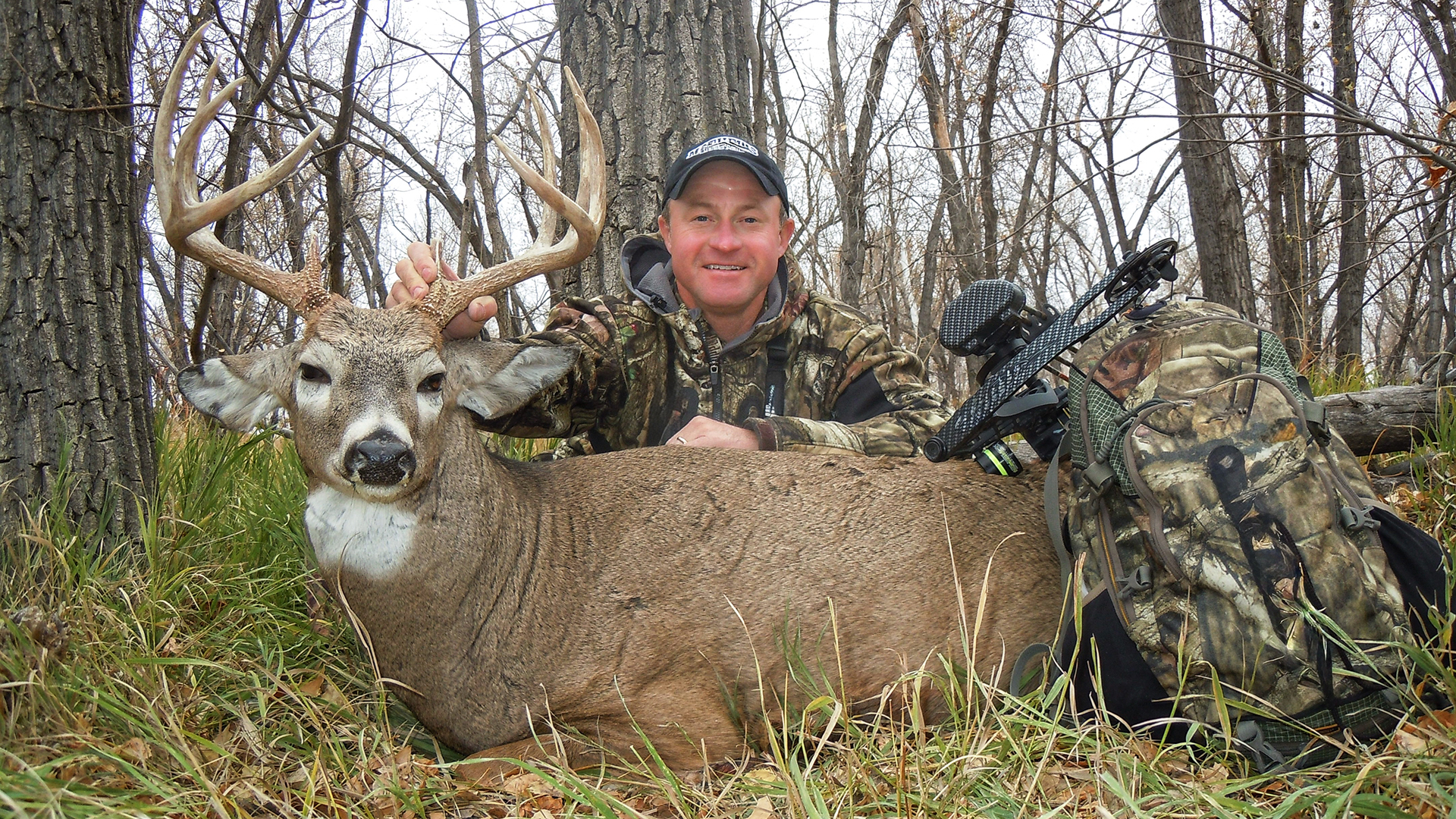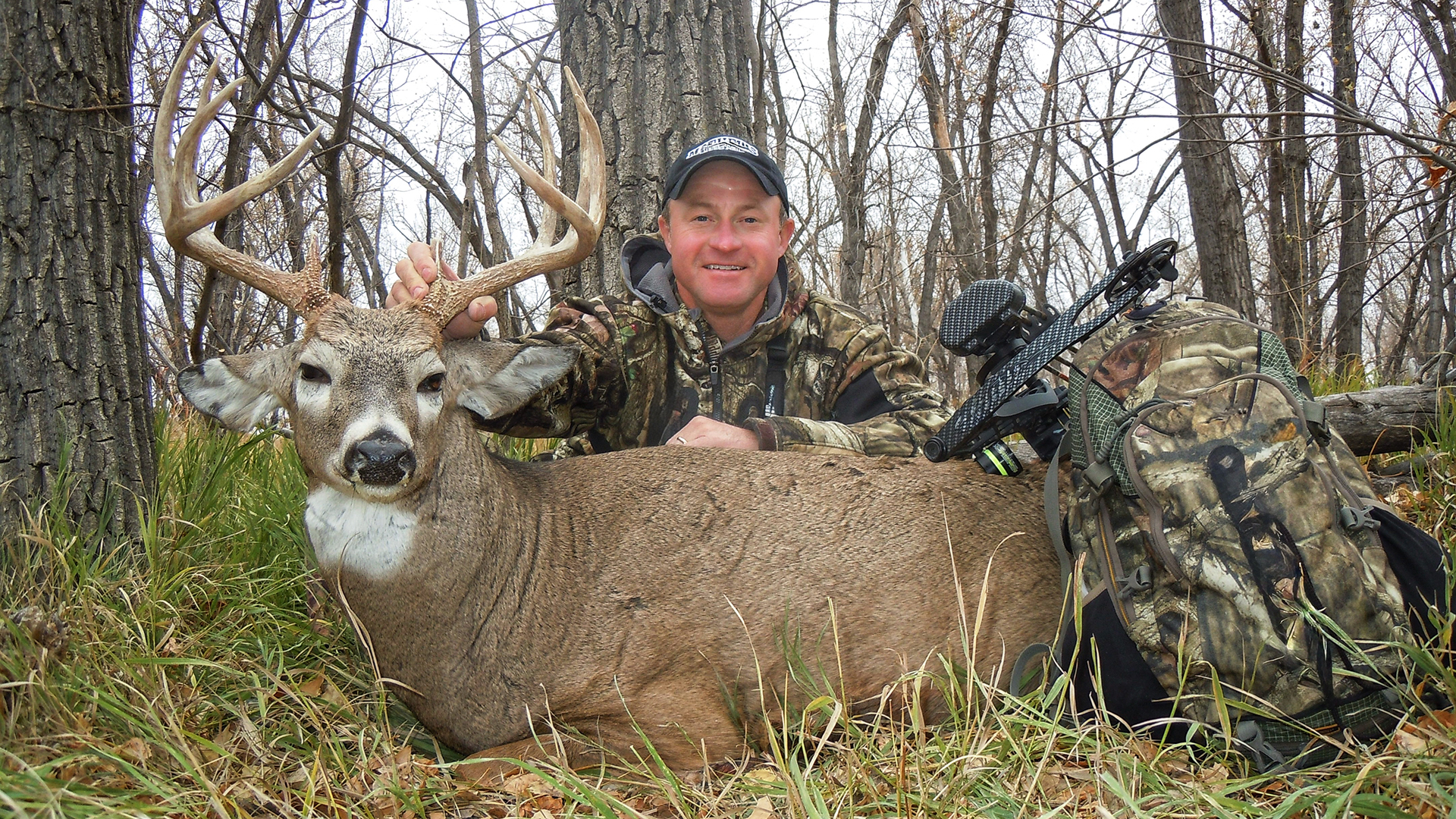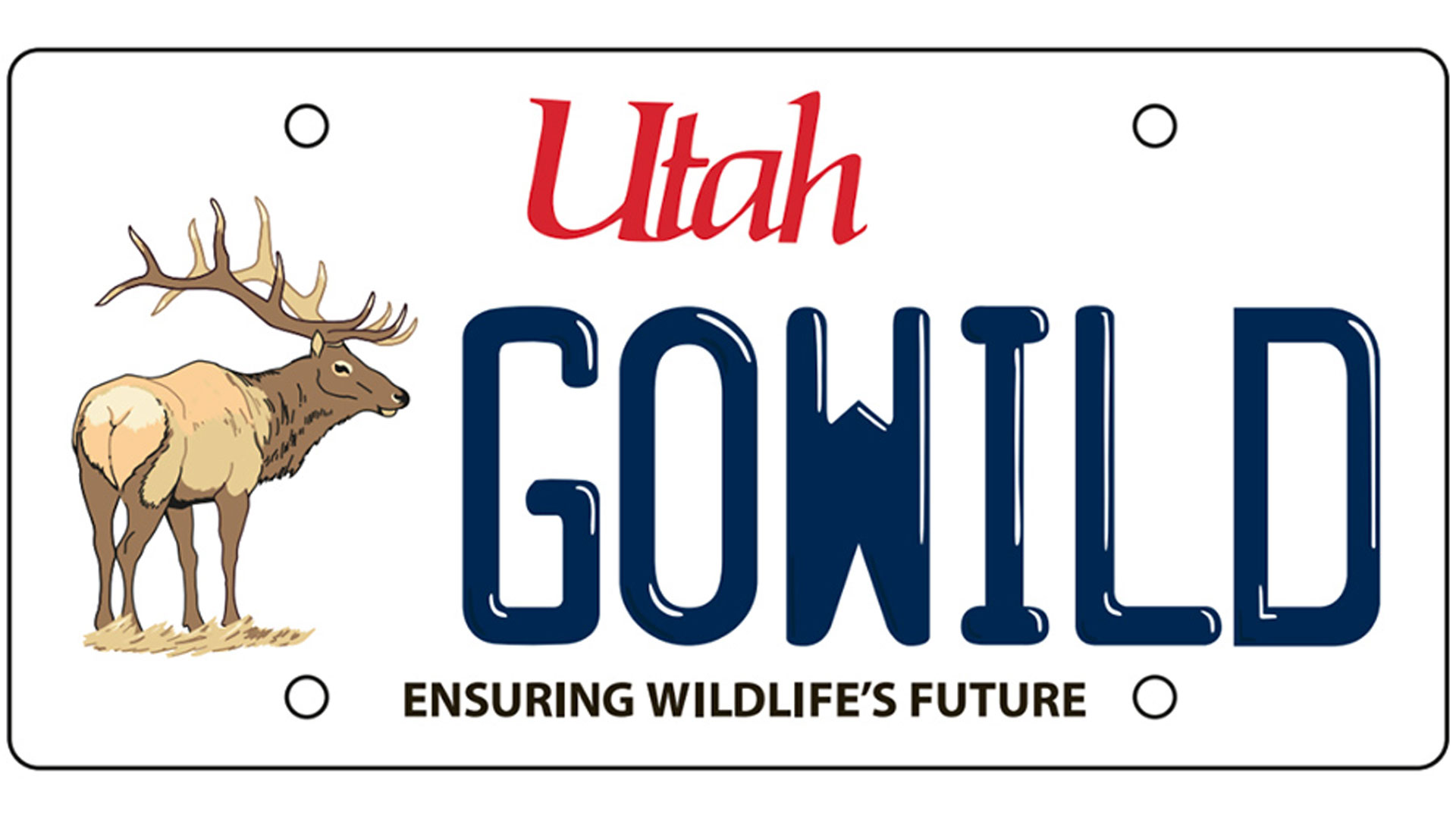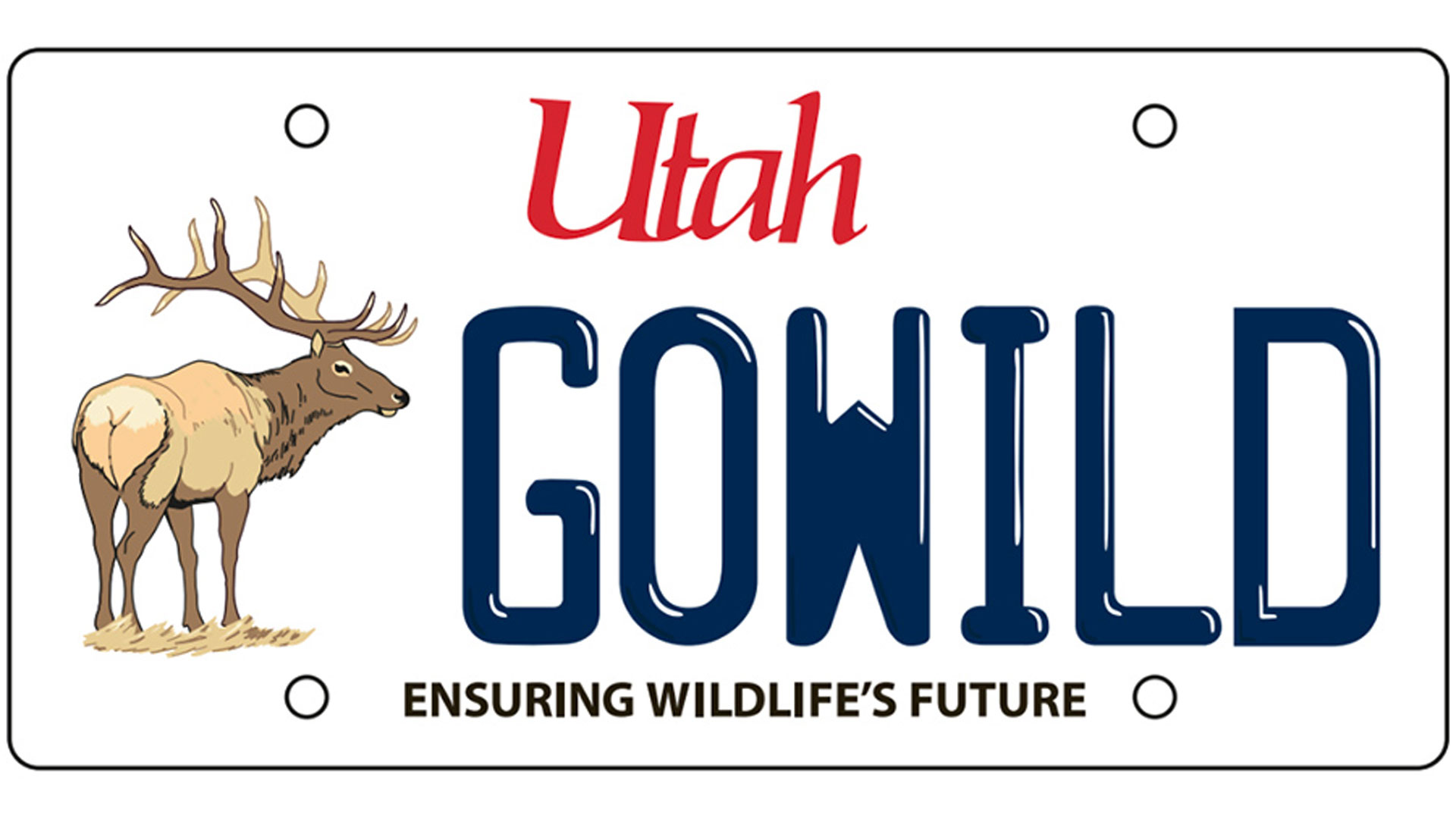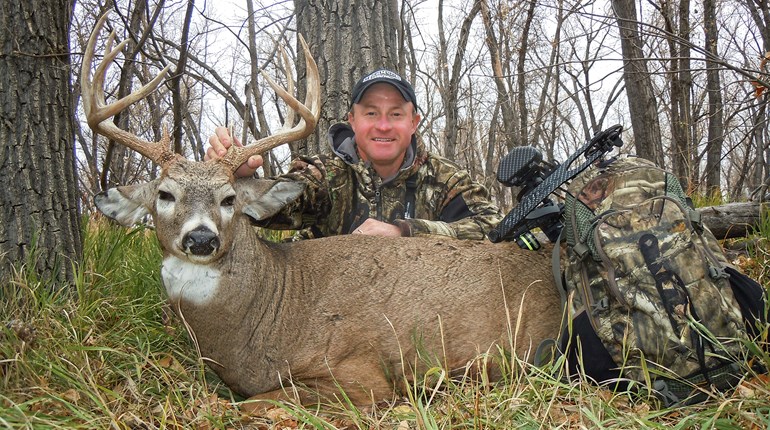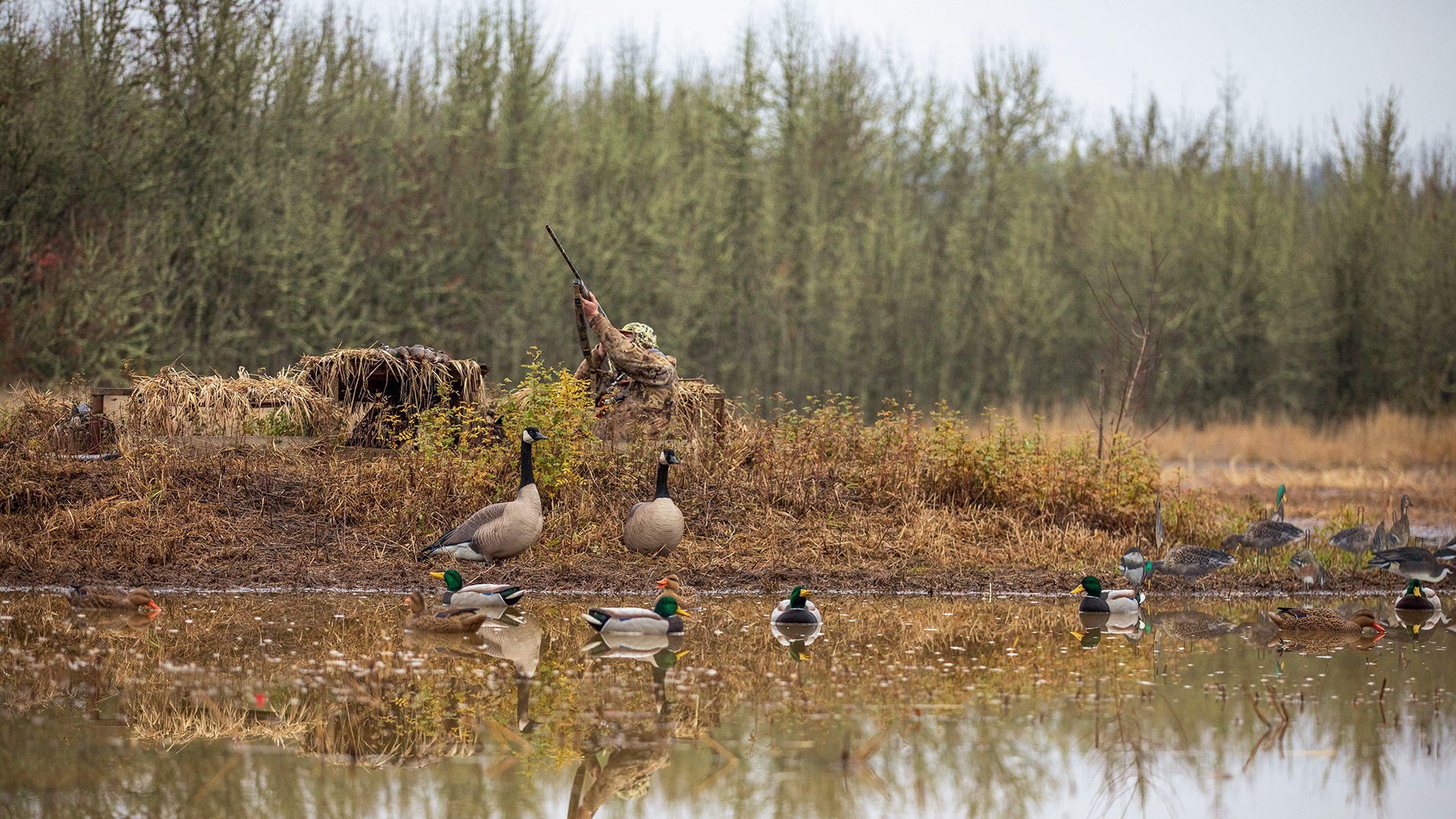
It was 10 a.m. when I picked up my buddy Austin Crowson and we headed to the duck blind. “Starting this late just doesn’t feel right,” Crowson smirked.
In less than an hour the decoys were set and we were tucked into our one-man blinds. We’d hunted this spot three times over the past two weeks and the shooting didn’t get good until late morning.
The last time we hunted it I set out two cellular trail cameras before leaving the pond. They revealed the biggest influx of ducks between 11:30 a.m. and 2 p.m. Our first shots came shortly after 11. By 11:25 we had limits of wigeon.

The next day we hunted a flooded filbert orchard. We didn’t start that hunt until the final two hours of the day. We did the same thing in a slough two days later, again shooting woodies and mallards. Timing is everything and not always is the best duck hunting at first light.
With duck season kicking off, now’s the time to plan ahead. Having the right tools and using them wisely will allow you to meet the changing conditions and challenges that come with the passing season. Here are six more tips to success.
Be Mobile
Scouting, having the right decoys, monitoring the weather and being mobile are key to many hunts. Of these, being mobile is one of the most important for a simple reason: If you can’t move, you’re stuck.
 The author took a handsome stringer with a .410 thanks to scouting. Remaining mobile to take advantage of the latest intel is important, he says.
The author took a handsome stringer with a .410 thanks to scouting. Remaining mobile to take advantage of the latest intel is important, he says.
My favorite way to hunt ducks all season long is alone, just me and my dogs. My go-to, one-man blind is one I crafted from panel wire for less than $30. It’s easy to carry and brush-in, and it hides both me and my dogs. It allows me to move based on wind direction, public hunting pressure and where the “X” is at any given moment. Sometimes I’ll move multiple times in a day, even around one body of water.
Having a big duck blind that holds a half-dozen hunters, three dogs and a gas grill is fine in some situations, but I often see such structures as being restrictive where I hunt. If water levels rise on rivers or heavy winds switch direction, food sources can shift. There’s nothing more frustrating than sitting in a big blind, watching birds work 300 yards away and not being able to move to them. Having a backup plan, like a little blind and a dozen decoys ready to go, is all it takes to turn a frustrating morning into a great one.
Last season, Crowson and I picked up a couple MOmarsh Invisi-Man blinds. They allowed us to move and hunt in a variety of situations we otherwise couldn’t have due to water levels and the inability to take cover. From flooded fields to timber, sloughs to ponds and dry fields, these one-man blinds and a handful of decoys brought us success we otherwise wouldn’t have known. Being mobile opens up opportunities, period.
The Taj Mahal
If you do hunt from a big blind, brush-in all sides, corners and the roof. Two seasons ago a guy asked me to look at his decoy spread. “The birds just aren’t working like they should! How would you arrange the decoys?” he asked. You could see the massive Taj Mahal blind from a mile away, literally, and none of it was brushed-in. I showed him how to properly conceal it and cut 3 feet off the top. I didn’t hear from him until the next season, when he asked me to again help him with his decoy spread. His blind looked the same with barely a twig on it. He paid a lot of money to the farmer to hunt that spot and killed four ducks in two seasons. Those numbers should have been into the hundreds.

Late-season birds grow smart, fast, and the best time to conceal a blind is now. Early fall foliage is simple to grab. Gather plenty of cover and firmly secure it to the blind, keeping in mind heavy rain and high winds, even snow, will beat the heck out of it as the season progresses. Leaves will also fall off. Stashing piles of brush and long grass nearby is a good idea so it can be added to the blind as needed.
Fill in any black holes that ducks can see when circling overhead. If hunting with a dog, make sure its blind is brushed-in, but that the dog can still see out of it. A good dog spots more birds than we do, so position the dogs’ blind so they can enjoy the hunt, too.
Silhouette Power
Silhouette decoys have been one of the biggest game-changers for my buddies and me. These decoys are light, easy to pack and will increase your spread like no other decoy can. Even if hunting from a stationary blind, silhouettes allow you to build-out a big, lifelike spread. They’re easy to move around based on wind direction and are quick to adjust as water levels rise or drop. It’s simple to add and subtract silhouettes, even break them into mini flocks and sprinkle them amid floaters in shallow water.

Three years ago I experimented with three dozen Big Al’s wigeon silhouettes. They allowed me to access places and kill birds I wouldn’t have been able to do otherwise. My silhouette arsenal has since grown to more than 50 dozen, including pintails and mallards. I keep five to eight dozen at two permanent blinds all season long and arrange them each hunt to meet the conditions. I have several stashed in other places I routinely hunt, so all I have to do is grab them and hike a short distance before setting up. I also carry about 10 dozen in the truck all season so I can be hunting in a matter of minutes should I find birds.
Last season I got a couple dozen Higdon FLATS Mallard Duck Silhouettes. They were great for adding movement to spreads early in the season and we shot a lot of ducks over them. Once the mallards left the area and wigeon moved in, I fitted two dozen of the Big Al’s wigeon silhouettes to the FLATS Motion Stakes. Spread among three to five dozen standard silhouettes, the moving wigeon simulated a feeding flock and brought in late-season cotton tops like I’d never seen.
Late last season Crowson and I hunted a flooded kale field. A big storm had hit the area two days prior, knocking over a giant, dead cottonwood tree. The tree fell into a section of field that had just flooded. We didn’t know any of this until that morning when we stumbled upon it in the dark, heading to our usual spot. After an hour of not firing a shot and watching loads of ducks not only pile into the skinny water with the fallen tree, but also hop on its many exposed limbs to preen and roost, we made a move. We threw our Invisi-Man blinds on our backs, grabbed a few floating decoys, a dozen silhouettes and headed to the “X.”
I had a dozen garden spikes in my blind bag, for hammering silhouettes on to logs. I did that while Crowson tossed out the other decoys and set our blinds. In less than an hour we had mixed bag limits of puddle ducks, and all spilled into the decoys at close range.
Jerk Cords, Spinners and Floaters
Motorized decoys are not legal in my home state of Oregon. To add motion to duck spreads I use Motion Duck Decoy Spreaders. At a permanent blind I hunt, I attach four mallards to their standard Decoy Spreader System, and seven pintails to their Ultimate Spreader System. I use them all season. Moving decoys on the water are important, always.
Early in the season I use wind-driven spinning wing decoys, specifically, two WindWhackers and a hen mallard from Revolution Waterfowl. As the season progresses and birds wise-up, I pull the wind-driven decoys and go with a Decoy Dancer mallard drake on a jerk cord. Late in the year I believe a few key wingbeats at a specific time are more effective than a constant, non-rhythmic turning of wings, something ducks have seen a lot of by the time they get to where I hunt.

At the start of the season my duck spread consists of all shapes, sizes and colors of floating decoys. “I like having variety in an early-season spread,” notes Crowson. “This is when I’m hunting local birds along with early arriving ducks from up North. Some have a ways to go before getting prime plumage, so the decoys don’t have to be perfect to start off.”
As the season progresses add more color. Pintail, wigeon and drake shoveler decoys are a great way to add contrast and boost visibility. As these species arrive in the migration, I like adding them to floating mallard and teal decoys. Even a few bufflehead, ring-neck or scaup decoys set to the side of a spread are a great way to add color and contrast that captures the attention of puddle ducks.
Call Less
As the season progresses, less calling can be effective. “Early in the season, aggressive calling can bring in family flocks or pull birds from public-land spreads, but later in the season ducks have heard it all,” Crowson continues. Ironically, it’s largely the overcalling by hunters that educates birds.
How many times have you been in the marsh, not far from a hunter who thinks blowing loud and hard all morning—regardless whether ducks are even flying—is the way to bring them in? Or heard calling that’s so poor no duck would respond, not even Daffy?
“It’s easy to see when birds don’t respond to calls, and that’s when I turn it down a notch,” adds Crowson. “It’s usually late November when I notice ducks starting to get call-shy, and that’s when I pay more attention to decoy spreads and timing what little calling I do, with how the birds are moving and reacting.”

When I hunt with Crowson, he does the calling. He’s much better at it than I am. “I like trying to spot birds as soon as I can to see how they react to the decoys. If they’re looking but not committing and flying well outside the spread, I’ll hit ’em with an aggressive mallard call. It’s short, crisp and loud. If that doesn’t turn them I’ll call louder. I’m also increasing the intensity of the jerk-cord decoys on the water if there’s no wind. A lot of times I don’t even call, just yank the jerk cord when the ducks are mere dots on the horizon; often that’s all ya need.”
Crowson likes a loud, clear call to get the attention of birds from a long way off in the open habitats he hunts. “Two seasons ago I switched to a Slayer Calls Ranger and it’s been fantastic all season long. I really like it on windy days and weekends when competing with other hunters on the river. The single-reed call is simple to blow and man, the sound carries.”
Avoid the urge to call when ducks are overhead, looking down on your blind, as they have an acute ability to pinpoint sound locations. Stay still when birds are directly overhead. You want them studying the decoys, not picking up your movements.
Adding pintail and wigeon whistles is good when these birds arrive. Wigeon are very vocal, especially when grazing on green grass or dabbling in a shallow pond. I’ll often mix these sounds with mallard calls, and use them more often than louder, attention getting calls. Once ducks commit, stop calling and let the decoys do the finish work.
Scouting Missions
Every factor we’ve looked at is important to increasing duck hunting opportunities and success. But none, perhaps, is as vital to consistently killing birds as scouting.
“For every day I hunt, I have three days of scouting in,” notes Crowson. “A lot of times if I limit out early or birds aren’t flying, I go scout for three or four hours. I’m always looking for flocks of birds and watching for big pushes following storms as the season progresses.” Scouting just before dark is a great time to locate ducks. Look for ducks feeding, roosting, preening and traveling. You can hunt them where they sit or try intercepting them as they move.
If you hunt a range of habitats that are spread across the state or a big area, consider trail cameras to help you scout. Trail cameras reveal when birds are moving, what species are around and how many there are. Trail cameras are your eyes in the marsh when you’re not there.
Last season I switched from standard trail cameras to Moultrie Mobile Edge Pro cellular trail cameras. I made the switch to cellular because by the time I checked the cards on my standard cameras, many of the birds had already moved. I was missing too many opportunities.
 Last year Haugen used Moultrie Mobile Edge Pro cellular trail cameras to scout. Cameras and motion decoys, where legal, can be invaluable to success.
Last year Haugen used Moultrie Mobile Edge Pro cellular trail cameras to scout. Cameras and motion decoys, where legal, can be invaluable to success.
With Moultrie Mobile trail cameras there are no cards to pull and all updates are automatic. Smart Zones can be set and reset from anywhere with your smartphone, meaning you can block out moving water or grass blowing in the wind so you’re not constantly getting unwanted shots.
I set all trail cameras on high-definition video mode because a 15-second video reveals much more than a still image or two. The sounds alone that are captured on video mode are worth it. Many times last year I caught a few ducks on camera, but heard thousands of others talking, out of frame. Such sounds led to some incredible hunts I otherwise would not have enjoyed.
Set trail cameras where you anticipate ducks to be. Islands and peninsulas that attract ducks for roosting and preening are prime locations. Skinny creeks, river sloughs, ponds, flooded fields, even dry fields are all places where trail cameras can be placed. Last season buddies and I had some outstanding hunts for mallards and wood ducks in little creeks, and wigeon in green fields, thanks to trail cameras.
If a storm is coming, put trail cameras on the downwind side of bodies of water. Rising water often exposes more food for ducks, and high winds push it to one area; that’s where you want the trail camera. Once ducks show up, don’t wait. High numbers of ducks can exhaust these opportunistic food sources, quickly.
In a valley I hunt, rye grass starts greening up in December. By mid-January it’s a few inches tall. Wigeon numbers build here by the tens of thousands. Pintails and a handful of mallards get in on the grazing, too. Fresh food sources like this are perfect to set trail cameras on. Once you find such hot spots, keep track of them for ducks will hit them year after year as long as the vegetation remains constant. Know state laws regarding the use of trail cameras for hunting.
As you prepare for duck season, do so from start to finish. Get what gear you think you might need and don’t be afraid to make moves you’ve not made. What you’ll soon discover is, even little changes can make a big difference.


